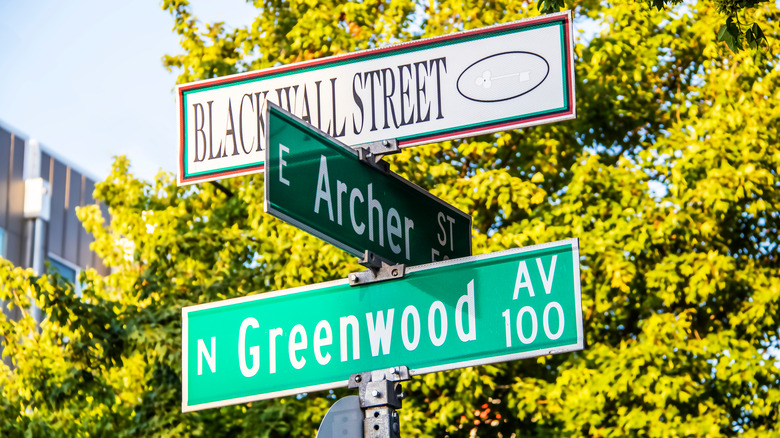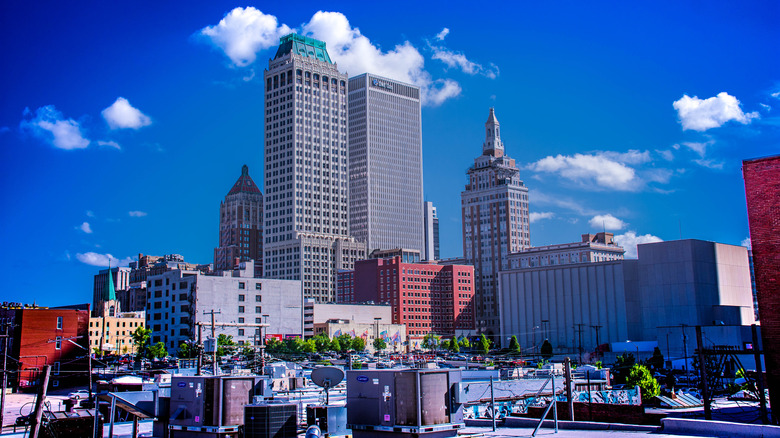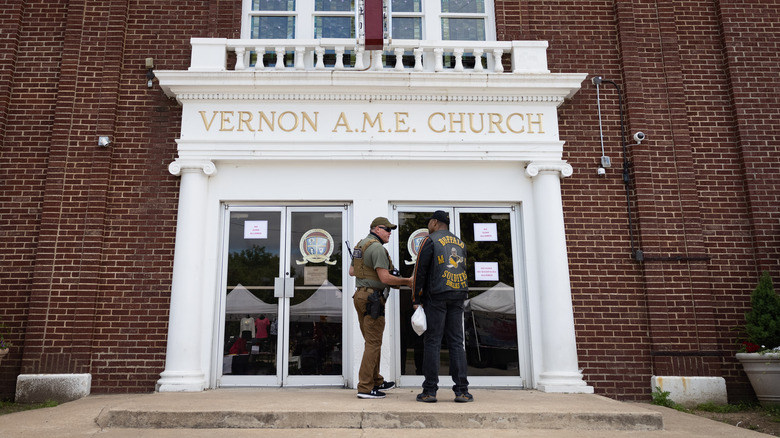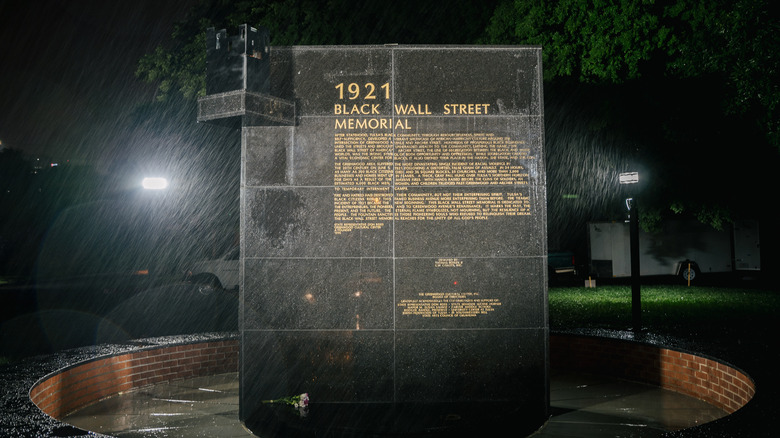How Many Victims Were There In The Tulsa Race Massacre?
President Biden visited Tulsa, Oklahoma last week to commemorate the 100th anniversary of the Tulsa Race Massacre. In doing so, he became the first American president to take part in any memorial event remembering the lives lost in one of the most significant race massacres in American history, says People Magazine. In his speech, the president emphasized that what happened on May 31 and June 1 of 1921 was indeed a racially motivated mass slaughter, and not an upheaval as history books so often categorized the events of that day (via White House). "My fellow Americans, this was not a riot. This was a massacre ... among the worst in our history, but not the only one. And for too long, forgotten by our history," said Biden.
Also marking the remembrance event were three centenarian survivors, two women and one man, who were all young children when the massacre happened (National Geographic). They are the only known living survivors of the deadly incident and recently testified at the nation's Capitol urging for reparations.
Tulsa's dark history
Tulsa is Oklahoma's second-largest city, as it was 100 years ago (according to Biggest US Cities). But once upon a time, it was home to the majority of the state's Black population. The city's Greenwood District neighborhood was once called Black Wall Street. As its name suggests, it was a predominantly Black community that was successful and thriving economically. This new prosperous community was the result of Black migration from the South in search of jobs in the Sooner State, according to JStor. Unfortunately, this affluent neighborhood would change forever on May 31.
A day before, a Black man named Dick Rowland had entered an elevator in the Drexel building in downtown Tulsa, per Tulsa World. Operating the elevator was a white woman named Sarah Page, who screamed when he did. Whatever happened inside that elevator is still a mystery, but authorities would take in Rowland and charge him. Some accounts say he stepped on her foot, others say he tripped and fell on her, which might have explained her scream. But her cry eventually led to police being called to the building and this was the start of one of the darkest racially motivated massacres in America.
The article that called for a race massacre
When the media got word of the incident, its reports did not help. On May 31, 1921, The Tulsa Tribune claimed and published that Rowland allegedly tried to rape Page, via this Tulsa World digital clipping. An article headline read "Nab Negro for attacking girl in elevator," and it fueled anger in the city's white population. On the contrary, the Black community rallied to offer support and protection to Rowland, who at that point, had a large mob of white men that wanted to lynch him. With both groups at the courthouse for Rowland, but for opposing reasons, a scuffle happened between a white man and a Black man, and a gun was fired, says Oklahoma History.
It only got worse from there.
That night, groups of white men went on violent and murderous rampages aimed at Black Tulsans. Angered mobs emboldened and backed by the police force, per JStor, attacked any Black person they saw. At some point, they descended on Greenwood, the pride of the city's Black community. And Black Wall Street would see its end that day. Mobs of armed white men created carnage in less than 24 hours. Businesses were destroyed and looted, homes were set ablaze, people were killed and beaten, and scores of buildings were destroyed. By June 1, about 35 blocks of the neighborhood were in ruin, per History. One of the only standing structures was the Vernon AME Church.
Victims of the Tulsa Race Massacre
In total, the massacre claimed the lives of 300 people (but estimates vary) and left thousands homeless. Authorities would make arrests following the bloodbath, but none were white, according to JStor. Most of the people apprehended in the aftermath of the Tulsa Race Massacre were Black, and the city's Black community was blamed for causing the massacre to happen. Neither local nor national legislators ever came through with any recovery assistance for its surviving Black residents, but many went on to rebuild anyway.
The state of Oklahoma wouldn't apologize for the massacre until 2001 when they created a Race Riot Commission to study and investigate the events of that day, says Oklahoma History. For decades, the massacre was mostly referred to as a riot. But in the last several years, as more people learn about the grim history, the knowledge of the Tulsa Massacre has entered the collective consciousness. When the HBO series "Watchmen" premiered in 2019, it opened up with the brutal depiction of the massacre (posted on YouTube). Fans of the show thought the scene was fiction and were shocked to learn that it was not fake but based on real events (via The Los Angeles Times). This confusion was a glaring reminder of how obscure the Tulsa Race massacre was in the annals of American history. But now with restored interest and presidential acknowledgment, the conversation about reparations for victims and descendants continues to pick up steam (via The Washington Post).



